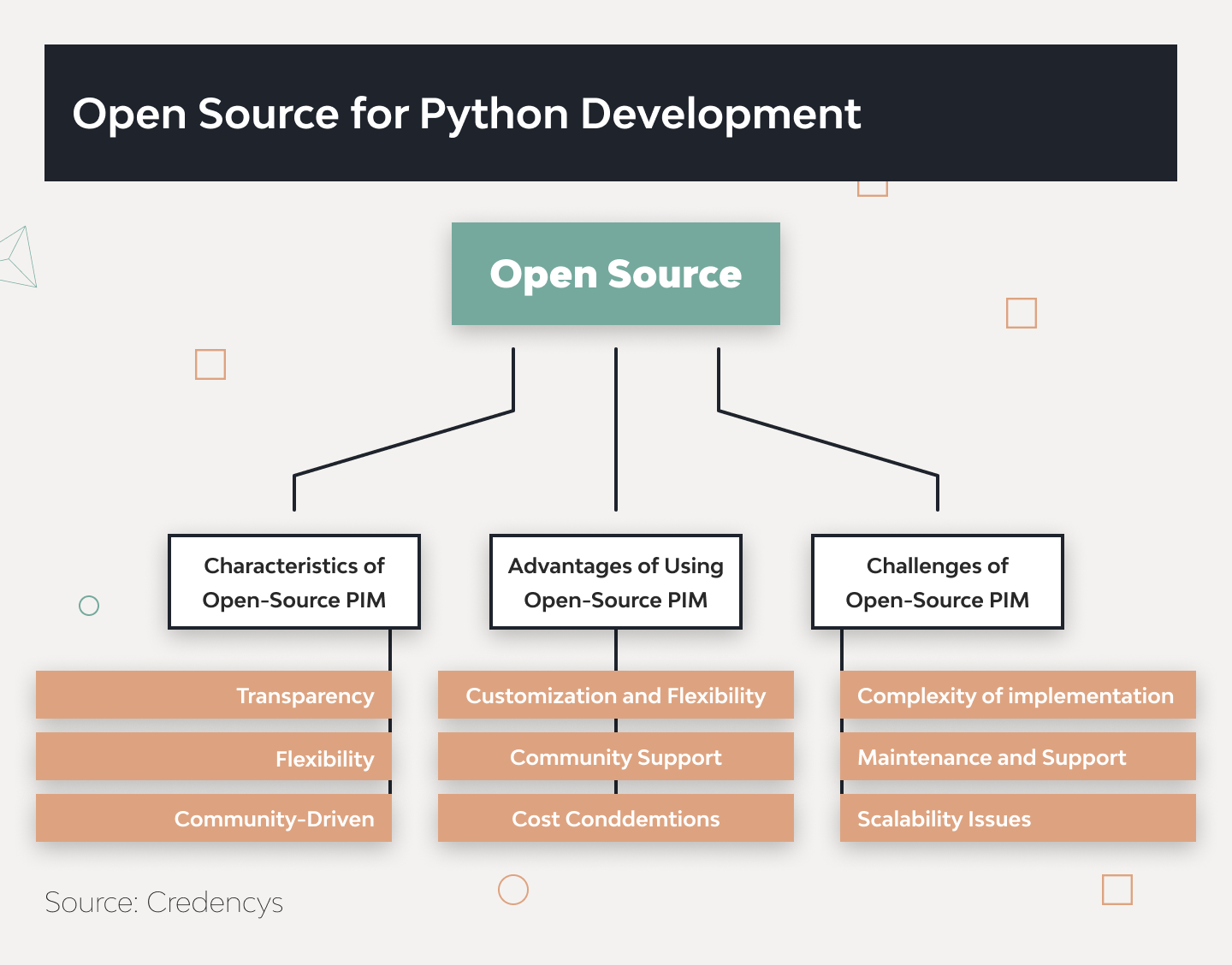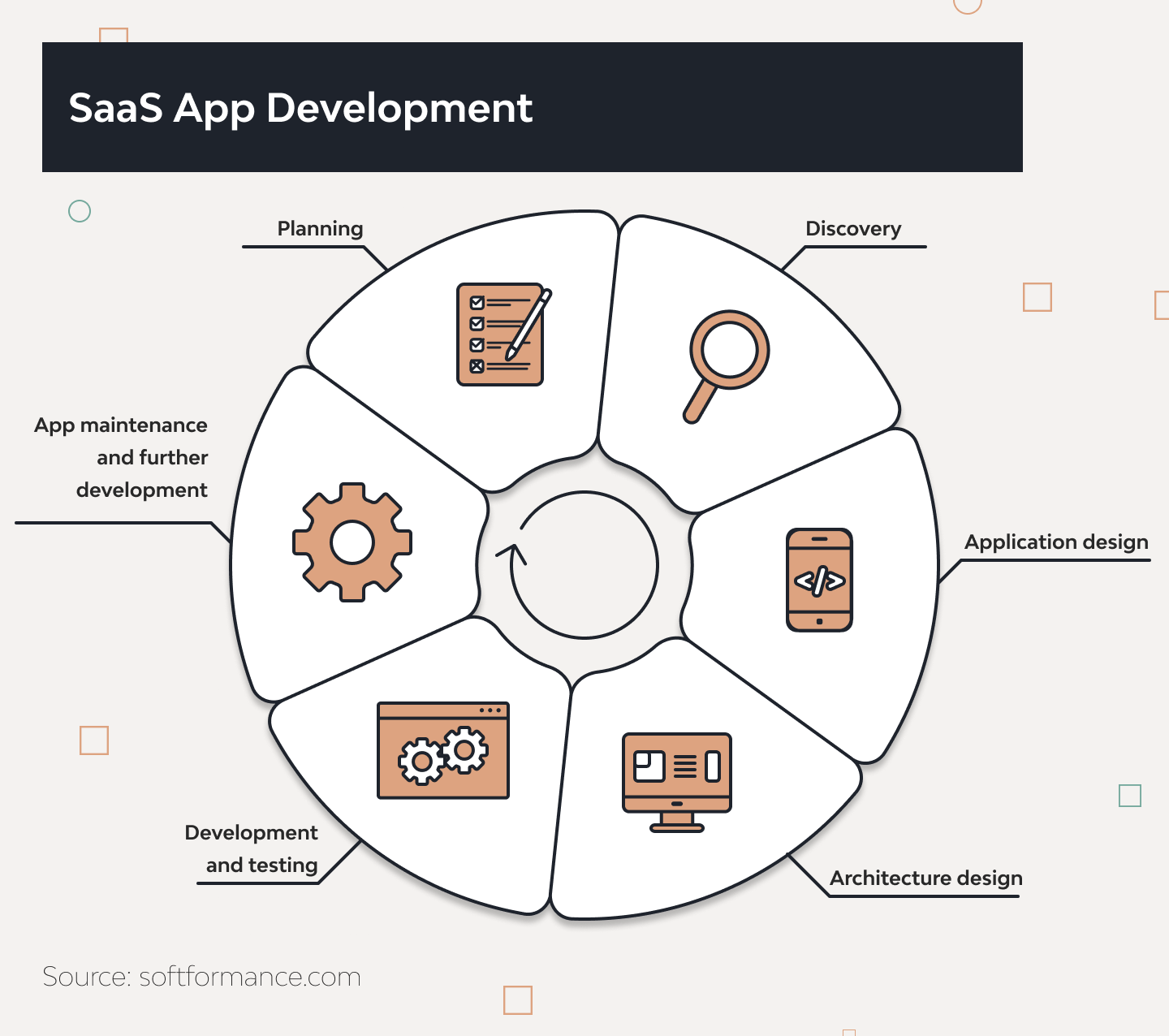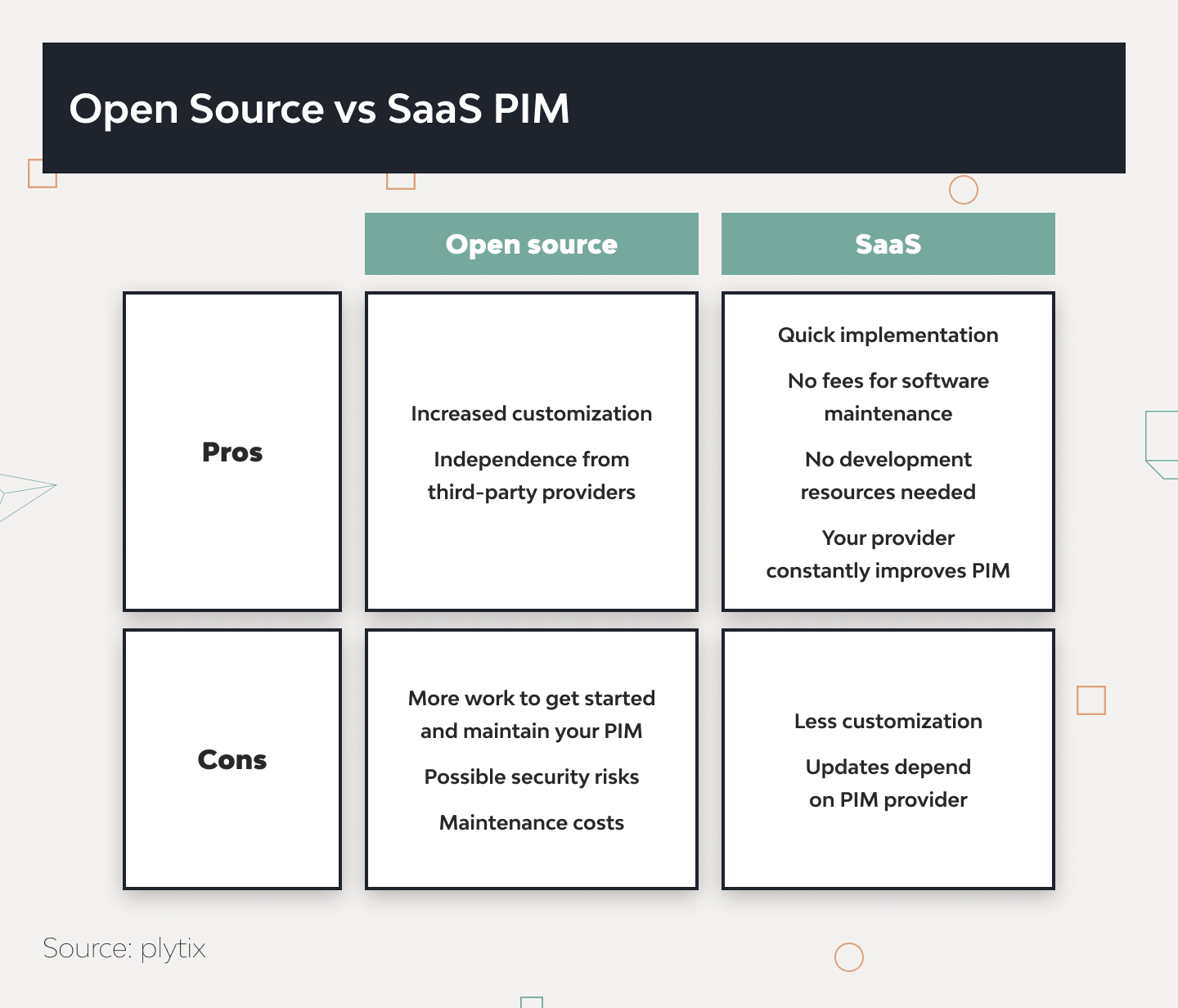Open-Source vs. SaaS in Python Development

Once you are ready to start a new Python project, it’s time to decide whether to utilize SaaS or open-source in Python development.
Remember that over 78% of companies prefer open-source software, yet the SaaS market is expected to skyrocket. The global Software as a Service (SaaS) market is projected to grow from $317.55 billion in 2024 to $1,228.87 billion by 2032, at a CAGR of 18.4%.
Fear not, as in this blog post, I will settle the debate about SaaS vs. open-source in Python development.
I will use case studies from Django Stars to expertly explore and highlight each option’s scalability, security, and cost differences. By the end of this article, you’ll have a clear understanding of Python development approaches and whether you should hire a Django developer to build a tailored solution.
You will discover:
- Definition and major characteristics of Open Source and SaaS
- Advantages and disadvantages of open source and SaaS for Python development
- Factors to consider when choosing between open source and SaaS
- Real-world case studies related to Python development
Choosing between Open Source and SaaS for Python Development
Consider the following examples of applications and scenarios to get a clearer picture.
Startup Projects
Scenario: A startup aiming to prototype and deploy a web application quickly.
Recommendation: SaaS with Python development. Platforms like Heroku or AWS Elastic Beanstalk streamline deployment and scaling, allowing startups to focus on development rather than infrastructure management.
Large-scale, Custom Applications
Scenario: Developing a large-scale, custom software solution with specific integration and plugin needs.
Recommendation: Open Source. Tools like VS Code or PyCharm, combined with Docker for containerization, offer the customization necessary to tailor the development environment to the project’s unique requirements.
Educational Programs
Scenario: A coding boot camp or university course teaching Python programming.
Recommendation: SaaS. Platforms such as Replit or Google Colab provide an easy-to-set-up environment, ensuring all students can access the same tools and resources, regardless of their hardware.
High-Security Projects
Scenario: A project handling sensitive data requiring stringent security measures.
Recommendation: Open Source or SaaS, depending on the context. An open-source setup with hardened security measures might be preferred for teams with strong IT and security expertise. In contrast, SaaS offerings like AWS or Azure provide robust security features that are out-of-the-box and suitable for teams looking for managed security.
Rapidly Scaling Applications
Scenario: An application experiencing rapid user growth necessitating scalable infrastructure.
Recommendation: SaaS. Cloud services like Google Cloud Platform (GCP) offer auto-scaling capabilities that adjust resources based on demand. This feature is challenging to implement efficiently with open-source tools alone.
Making the Decision: Practical Considerations
The choice between open-source and SaaS boils down to several key considerations.
Project Phase and Speed to Market. Startups or projects under tight deadlines may benefit from SaaS’s streamlined workflows. At the same time, open-source tools might be better suited for projects in later stages of development that prioritize customization and optimization.
Customization Needs. Projects requiring heavy customization and control over the development stack will find open-source tools more accommodating.
Security and Compliance Requirements. Sensitive projects may opt for SaaS for its out-of-the-box security standards or choose open-source solutions if they have the in-house expertise to secure their development environments rigorously.
Scalability Requirements. Applications expected to scale quickly might find the automatic scaling features of SaaS platforms invaluable.
Open Source for Python Development
As someone who has been in the trenches of Python open-source development for over a dozen years, I want to share the advantages and disadvantages of open-source tools for Python and the nuanced realities you’ll face in the field.

Benefits of Open-Source Python Projects
Cost-Effectiveness
Open-source means you’re not paying upfront for software licenses, which is a no-brainer for startups and indie developers. However, the actual cost advantage comes when you look at the long-term scalability of your projects. You can bootstrap complex applications with Python’s open-source libraries without hefty investments. This provides more experimental and innovative projects that might not be feasible with proprietary software.
Customization
Open source isn’t just about altering a few lines of code. It’s about the ability to reshape tools to fit your needs fundamentally. In Python, you can take a library like Pandas or NumPy and modify its core functionality to optimize your specific data processing tasks. This level of customization can lead to significant performance improvements and unique features that give your Python projects a competitive edge.
Community
Python community is vast and incredibly supportive, offering advice and solutions. But there’s more to it. Participating in this community through contributing to open-source projects or sharing your modifications can elevate your profile, open up networking opportunities, and even lead to job offers or collaborations on groundbreaking projects.
The Realities and Challenges of Open Source
Maintenance: The Hidden Cost
Dependencies get updated, deprecations occur, and your once cutting-edge solution can quickly become obsolete unless regularly maintained. This requires cost analysis of SaaS vs. open-source for Python and a time investment that many overlook when choosing open-source. Sometimes, it’s close to the costs saved on licenses.
Security
You have probably heard people say that open-source software is not secure. They believe it’s because it is publicly accessible, but that’s not entirely true. The transparency of open-source software makes it easier to address any security concerns.
The vast community of developers and users contributing to these projects acts as a real-time vulnerability detection system, ensuring any issues are identified and fixed quickly.
Of course, it’s essential to acknowledge that open-source software is not immune to security risks. However, the size of the community and the organization’s commitment to overseeing the project help mitigate these risks. That’s why developers and organizations should consider popular open-source software when evaluating their options.
Support
While it’s true that open-source projects lack the 24/7 dedicated support of SaaS solutions, the situation is nuanced.
In Python’s open-source ecosystem, you’re not just a consumer of support. You’re also expected to be a contributor. This means that while you can tap into the community’s knowledge, you’re also part of the mechanism that creates that knowledge, which can be both a privilege and a burden.
SaaS for Python Development
Moving from the open-source ecosystem, let’s delve into Python SaaS development. SaaS is a delivery model where software is provided over the internet as a service. It eliminates the need for local installation and maintenance. Key features of SaaS include its cloud-based nature, subscription-based pricing model, and managed service, meaning the Python SaaS provider is responsible for the software’s maintenance, updates, and overall infrastructure.

Benefits of Using SaaS for Python Development
Ease of Use
SaaS products are renowned for their turnkey nature. For Python developers, this means access to pre-configured environments and tools that require significantly less setup and technical know-how to get started. This can drastically reduce the time from conceptualization to development. It lets teams focus more on coding and less on the operational aspects of their products.
Scalability
One of the standout features of SaaS is its inherent scalability. The infrastructure behind a SaaS application automatically adjusts to accommodate user demand, whether scaling up to handle peak loads or down during quieter periods. For Python developers working on projects with variable usage patterns, the performance is maintained without manual intervention or over-provisioning of resources.
Security
With SaaS, the responsibility for securing the application shifts from the user to the provider. This includes regular updates, patching of vulnerabilities, and proactive security measures. For teams lacking dedicated security expertise, this can provide peace of mind, knowing that the platform hosting their Python applications is continuously monitored and maintained to counteract security threats.
Support
Unlike the community-driven support model of open-source projects, SaaS providers offer dedicated support teams. This can be a significant advantage for Python developers, especially when facing urgent issues. Access to professional, timely support can make a substantial difference in operational continuity and project timelines.
Potential Drawbacks of SaaS
Cost
While SaaS eliminates upfront costs for software licenses and infrastructure, the subscription fees can accumulate, becoming a considerable expense over time. For long-term projects or startups with limited budgets, these costs must be carefully weighed against the benefits.
Vendor Lock-in
When you commit to a SaaS solution, you’re also tying yourself to the provider’s ecosystem, standards, and data formats, which can lead to vendor lock-in. This dependency can make it challenging to switch providers or migrate to different solutions in the future, potentially limiting flexibility and strategic options.
Limited Customization
Python with SaaS applications offers less room for deep customization compared to open-source software. While many providers strive to provide configurable options, the core functionality and infrastructure are fixed. For Python developers with specific, nuanced requirements, this could compromise how closely the solution can align with business needs.
SaaS vs. Open-Source in Python: Development Environments
In Python development, the dichotomy between leveraging Software as a Service (SaaS) platforms and embracing open-source alternatives frames architectural and operational decisions. This exploration aims to dissect these two paths not through a theoretical lens but by grounding the discussion in practical scenarios and real-world applications.
Development Environments at a Glance
Open Source: The open-source arena shines with IDEs like VS Code, PyCharm Community Edition, and Jupyter Notebooks, favored for their adaptability and the empowerment they offer to developers in personalizing their development experience. These tools are good at scenarios where developers build highly specialized applications requiring custom plugins or workflows, such as machine learning models in Jupyter Notebooks or developing complex software with a microservices architecture using VS Code.
SaaS: Platforms like GitHub Codespaces and Replit deliver an on-demand, cloud-based development environment. They excel in scenarios requiring rapid setup and collaboration. For startups looking to minimize initial setup time and cost or educational settings where uniformity and ease of access are paramount, SaaS IDEs offer significant advantages.

DjangoStars Case Studies
DjangoStars has embarked on numerous projects, harnessing the power of Python, Django, Django REST Framework, and a suite of other open-source technologies to deliver robust solutions.
Our experience spans from leveraging heavyweight SaaS tools like Salesforce to integrating with specialized services like Bynder and Mailtrap to address unique client needs. Below, I’ll outline a few case studies that exemplify our approach to solving complex challenges through innovative solutions.
Salesforce Integration for Boa Lingua
Short Description: We developed a comprehensive solution for Boa Lingua, a language travel specialist. We focused on customer order management, communications, and staff organization using Salesforce(a leading CRM platform).
Challenges: The primary challenge was managing customer orders, correspondence with clients and vendors, and organizing the customer’s staff tasks, including calendars and various assignments.
Solutions: Our approach involved creating a dedicated module with its database. This module subscribes to specific Salesforce events in code and processes them asynchronously. It converts data, sends it to Salesforce, logs any errors or the fact of sending. This solution seamlessly integrates Boa Lingua’s operational workflows and Salesforce’s CRM capabilities. It streamlines their processes and enhances productivity.
Bynder – Digital Asset Management Integration
Short Description: We tackled managing, optimizing, and distributing images and video files for a client by integrating Bynder, a comprehensive digital asset management system.
Challenges: The task involved uploading, optimizing, and distributing (via CDN) images and video files, requiring a solution to efficiently handle these tasks while ensuring ease of use for the client’s team.
Solutions: The client’s responsible parties upload images and videos to Bynder, adding parameters like Point Of Interest, alt text, and descriptions. We then pull these images from our custom code using a JavaScript library by Bynder for integration. This setup lets the data be stored in the cloud, relieving us as developers from concerns about backups, moderation, etc., and ensuring the client’s digital assets are efficiently managed and distributed.
Mailtrap Integration for Email Testing and Tracking
Short Description: Emails are frequently needed when developing and testing applications. We used Mailtrap, a service that emulates a real email server for testing and tracking emails without sending them to actual recipients.
Challenges: The development process often requires sending emails, for which services like Mailgun or Sendgrid are typically used. However, using real email addresses for testing can take time and effort.
Solutions: Mailtrap acts as a fake email server, intercepting emails sent during testing and allowing us to review them on its platform. It also checks HTML layouts for potential issues with real emails in various email clients. Recently, Mailtrap introduced a feature for actual email sending, making it a versatile tool for both development environments and production. This feature streamlines our email testing and sending processes without switching between services.
Conclusion
To ensure your project remains true to its core identity and future objectives, consider Python programmers for hire.
Open-source is all about innovation, offering unique and tailored solutions that can adapt and evolve through customization and community collaboration.
On the other hand, SaaS provides a worry-free, streamlined environment where scalability and maintenance are handled efficiently, allowing teams to focus on development and deployment.
At DjangoStars, we’ve demonstrated how to effectively utilize both open source and SaaS to address client needs. For instance, our integration of Salesforce for CRM solutions showcases our ability to marry SaaS convenience with custom open-source tools for a seamless operational workflow. Another example is our use of Bynder for digital asset management, leveraging SaaS for reliability and scalability, complemented by open-source tools for customization.
Let’s create something exceptional together. Schedule a consultation to discuss how we can bring your project to life using our Python development expertise.
- Can I build a SaaS with Python?
- Python is a prime choice for developing Software as a Service (SaaS) applications due to its readability, scalability, and robust frameworks like Django and Flask.
- Can I make software with Python?
- Yes, Python is incredibly versatile and can be used to develop a wide range of software applications. From web and internet development, desktop apps, and network servers to machine learning, data analysis, and scientific computing, Python's simplicity and powerful libraries like NumPy, SciPy, and Pandas suit simple scripts and complex software systems.
- How do security practices compare in open-source and SaaS Python solutions?
- Security practices can vary significantly between open-source and SaaS solutions. Python open-source projects offer transparency, allowing developers to inspect and contribute to the security of the codebase. However, implementing and maintaining security measures falls on the software's users or developers. In contrast, SaaS solutions for Python development typically come with built-in security features maintained by the provider, offering automatic updates, data encryption, and compliance with security standards.
- Can open-source Python tools be as scalable as SaaS solutions?
- Open-source Python tools can be scaled to meet high demand, but this often requires more manual setup and maintenance than SaaS solutions designed to scale automatically with demand. Tools like Celery for task queuing and Django, which can support high traffic with proper architecture, allow for scalable application development.
- What are the cost implications of using open source versus SaaS for Python projects?
- The cost implications of using open-source versus SaaS for Python projects can vary based on the project's scale, complexity, and specific needs. Open-source tools are generally free to use but may incur indirect costs related to setup, customization, and maintenance. On the other hand, SaaS solutions operate on a subscription model, which can simplify budgeting with predictable costs but may become expensive as usage grows.











